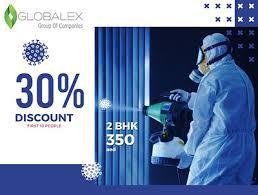The demand for pure water has never been greater, given the global challenges of water scarcity, pollution, and climate change. Sweet water, often referred to as fresh or potable water, is essential for daily life, agricultural production, and industrial activities. As populations grow and urbanization intensifies, meeting today’s demands for sweet water has become a critical priority. This piece explores the various sweet water supply solutions designed to ensure that communities have access to clean and safe water in both the short and long term.
Understanding Sweet Water and Its Importance
Sweet water refers to water that is free from salt and other impurities, making it suitable for human consumption and agricultural use. Sources include groundwater, rivers, lakes, and reservoirs. Ensuring a reliable sweet water supply is crucial, as it supports public health, food production, and economic stability. However, several factors, such as contamination, over-extraction, and inefficient distribution systems, are threatening this precious resource.
As a result, communities, businesses, and governments worldwide are adopting innovative strategies and technologies to optimize sweet water supply, improve distribution, and maintain quality standards. The following sections delve into some of the most effective sweet water supply solutions currently being implemented to meet today’s water demands.
1. Water Purification and Filtration Systems
One of the most straightforward approaches to ensuring a reliable supply of sweet water is through water purification and filtration systems. These systems remove contaminants, bacteria, and heavy metals, ensuring that the water meets safety standards for human consumption. Filtration methods include reverse osmosis, activated carbon, and ultraviolet (UV) treatment.
- Reverse Osmosis (RO): RO systems use a semipermeable membrane to remove impurities from water. They are highly effective for producing large quantities of pure water, making them ideal for both residential and industrial applications.
- Activated Carbon Filtration: This method uses activated carbon to absorb harmful chemicals and organic compounds, improving the taste and odor of water.
- UV Water Purification: UV light is used to kill bacteria and viruses, making it a chemical-free solution for disinfecting water.
Implementing these technologies at the municipal and household levels can significantly improve sweet water quality and availability.
2. Desalination Technologies
Desalination is a game-changer for regions with limited access to freshwater sources. This technology converts seawater into potable sweet water by removing salts and minerals. The two main methods used are thermal desalination and membrane desalination (such as reverse osmosis).
- Thermal Desalination: Involves heating seawater to produce steam, which is then condensed back into pure water, leaving the salt behind.
- Membrane Desalination: Uses high-pressure pumps to push seawater through a membrane, separating salt and impurities.
While desalination is energy-intensive, advancements in energy efficiency and the integration of renewable energy sources are making it more sustainable. Countries like Saudi Arabia and the United Arab Emirates are pioneers in using large-scale desalination plants to meet their water needs.
3. Rainwater Harvesting
Rainwater harvesting is a sustainable solution that can significantly enhance sweet water supply, especially in rural and agricultural regions. It involves collecting and storing rainwater for future use. Techniques include rooftop collection systems, rain barrels, and underground storage tanks.
- Rooftop Rainwater Harvesting: Water collected from rooftops can be filtered and stored for domestic use, reducing dependency on groundwater.
- Rain Gardens and Permeable Pavements: Designed to capture and infiltrate rainwater, these solutions help replenish groundwater reserves and mitigate flooding.
Rainwater harvesting not only provides a supplementary water source but also helps in reducing erosion and recharging groundwater tables.
4. Water Recycling and Reuse
With the increasing pressure on water resources, recycling and reusing wastewater is becoming a crucial strategy for meeting water demands. This process involves treating used water to remove contaminants, making it suitable for non-potable purposes such as irrigation, industrial cooling, and even potable use in some cases.
- Gray Water Recycling: Involves reusing relatively clean wastewater from baths, sinks, and washing machines for irrigation and toilet flushing.
- Advanced Wastewater Treatment: Technologies such as membrane bioreactors and chemical treatments make it possible to produce high-quality recycled water that can supplement traditional sweet water sources.
Implementing water recycling programs can significantly reduce the strain on freshwater resources and contribute to long-term water sustainability.
5. Smart Water Management Systems
Digital technology is transforming water management by providing real-time data on water usage, quality, and supply. Smart water management systems use sensors, Internet of Things (IoT) devices, and data analytics to monitor and optimize water distribution networks.
- Leak Detection and Prevention: Smart sensors can detect leaks in pipelines, reducing water loss and saving millions of gallons of water annually.
- Automated Irrigation Systems: These systems adjust water delivery based on soil moisture and weather conditions, ensuring efficient water use in agriculture.
- Water Quality Monitoring: Sensors monitor parameters such as pH, turbidity, and contaminant levels, ensuring that water remains safe for consumption.
Smart water management systems help reduce wastage, improve water quality, and ensure the efficient use of resources.
6. Sustainable Groundwater Management
Groundwater is a critical source of sweet water, but over-extraction can lead to depletion and land subsidence. Sustainable groundwater management involves balancing withdrawal with recharge to maintain aquifer levels.
- Aquifer Recharge Projects: These involve injecting or infiltrating surface water into aquifers to replenish groundwater reserves.
- Regulating Groundwater Use: Policies and regulations that control groundwater extraction can prevent overuse and ensure the long-term sustainability of this resource.
Communities around the world are adopting these measures to protect and sustain their groundwater supplies.
7. Community Education and Engagement
No water supply solution can be successful without community involvement. Educating communities about water conservation, pollution prevention, and efficient water use is essential for maintaining a sustainable sweet water supply.
- Water Conservation Campaigns: Promote practices such as fixing leaks, using water-efficient appliances, and minimizing wastage.
- Community Water Committees: Involve local stakeholders in decision-making processes related to water management, ensuring that solutions are tailored to the specific needs of the community.
By empowering communities, governments, and organizations can create a culture of water stewardship that supports long-term water security.
Conclusion
Meeting today’s demands for sweet water requires a multi-faceted approach that combines technology, sustainable practices, and community engagement. From advanced purification systems and desalination to water recycling and smart management, each solution plays a vital role in ensuring a reliable supply of clean, safe water. By implementing these strategies, we can address the challenges of water scarcity and secure a sustainable water future for generations to come.







More Stories
Breaking Barriers In Sarcoma Detection: New Frontiers In Testing
A Natural Solution to Calm Your Minds
Mastering the Art of Acne-Free Skincare